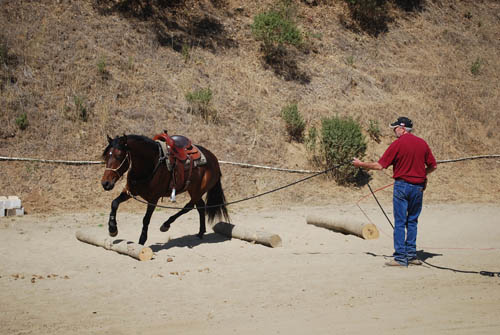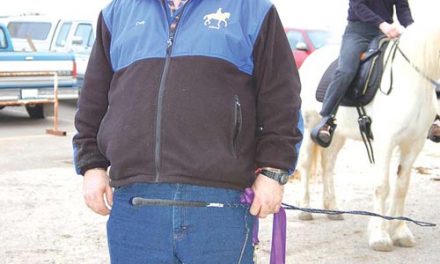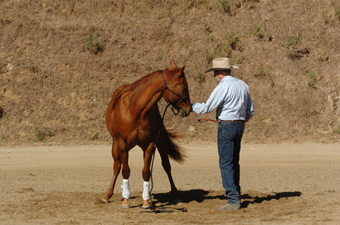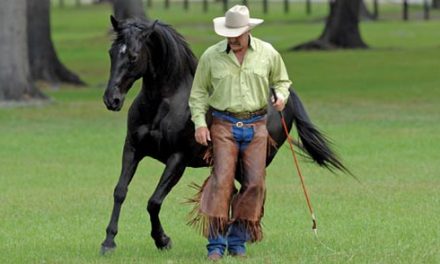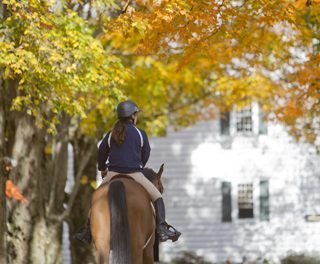I’ve seen too many people over the years get hurt because they just mounted without getting the freshness off the horse. Some people like to call lunging play but it is the running, bucking, and rearing to let off steam and have a good time. Especially during the winter when there is not a lot of turnout and a horse has been in a stall or paddock for two or even three days, it is critical to let the horse unwind. When we get on to ride without allowing this, we wind up wrestling with the horse instead of enjoying our ride. It is all about safety and getting on a horse under these circumstances does not make sense to me. Every horse needs to have an opportunity to move and blow off some steam.
When I was 25 or even 35 years old I would get on a horse like that. The horse would be all fired up and I used to show off how well I could maintain control. That was not a really good or smart thing to do. The horse industry primarily represents women 35 to 55 years old and some well into their sixties. I’ve been working with problem horses for approximately 25 years and most of the problems I’ve seen occur because the horse is too full of energy. The horse starts moving fast and the rider grabs the reins, which is a natural instinct for us. The horse may then rear up or even go over backwards. The horse may buck or crow hop because of all the pent up energy. I say, let us all be smart and lunge our horses before we ride them.
There is another reason why it is good to lunge a horse before riding. I know the natural horsemanship people say lunging is mindless work. However, if you do this exercise correctly and are very specific in your actions and directions, it is a far from mindless use of time. As you watch your horse moving around you, you can see how he is tracking and moving. You can identify any stiffness, lameness or attitude issues. Even my finished horses are lunged, if only for five minutes or less. When I mount, the horse is warmed up and loose in the joints. I don’t have to spend time in the saddle getting the horse physically and mentally ready to work. I know that the horse has his mind in the right place.
Another good reason to lunge is to teach certain commands. Commands that can be learned on a lunge line include go forward, walk, trot, canter and stop the feet. Transitions between gaits such as trot to canter and trot to walk can also be taught and practiced. You can work on canter departures from a stop on a long lunge line. Lunging is also a gymnastic exercise and you can see how the horse performs various gaits and movements. You can add other training aids such as poles, to help get the horse collected and engaged.
If your horse has not been trained to lunge properly, much of the benefit of the exercise will be lost. I want to get the play out of my horse and use the time as well to get some other benefits. You may have to teach your horse how to lunge properly. How do I know when the horse is lunging properly? First, the horse is not pulling on me. I can’t tell you how may times I have seen trainers, particularly in the English discipline, be pulled around by horses running on the end of a 25 or 30-foot lunge line. When a horse is pulling, he is not getting the benefit of the gymnastic part of the exercise. With pulling comes resistance and you are working against yourself. I don’t want a big drape in the lunge line but I do want some softness in the line, in other words a little bit of play.
When lunging properly, the horse’s nose is slightly tipped to the inside. I don’t want the neck bent around because then the right shoulder, if the horse is going left, will float out. When the shoulder floats out, that teaches the horse to run through the shoulder and we don’t want that. I want the horse’s body straight. I have seen many trainers, particularly western trainers, who lunge with the hind quarters to the inside of the circle and the nose to the outside. It almost looks like the horse is side passing on the lunge line. We don’t want that either. Finally, when we are finished lunging, we want the horse’s movements to have a nice rhythm and cadence. The horse should be relaxed and coming through from behind rather than dragging himself along. This can take five minutes or twenty five minutes.
It does take time to train a horse to lunge properly. You need to find someone who can teach you the proper way to train your horse to lunge. We do not begin to train a horse using a thirty-foot line. When I am teaching a horse to lunge, I begin with a line as short as three feet. I may even need to start with my hand just below the snap to get the horse to start moving around me. This also helps keep the nose slightly tipped in. As the horse learns the exercise, I gradually increase the length of the line. Any time you start a horse on a 25 or 30-foot lunge line, you are asking for trouble. The horse will likely run away, run through the shoulder, possibly run off and pull you along. Like everything else related to properly working with a horse, the challenge is learning how to do it correctly.
I use the lunging exercise all the time. Not just to get the energy and play out but to get the horse relaxed. If you go to a show or some place that you have never been and your horse is edgy, get out the lunge line. Work the freshness out and get the horse concentrating on you. My goal is that the horse’s ears are on me. Also, I want the inside eye on me looking for direction.

